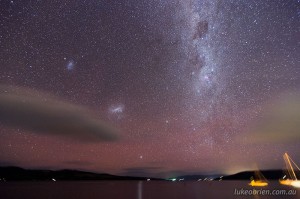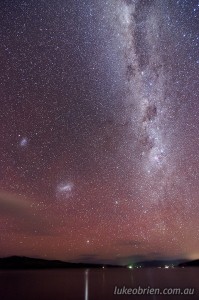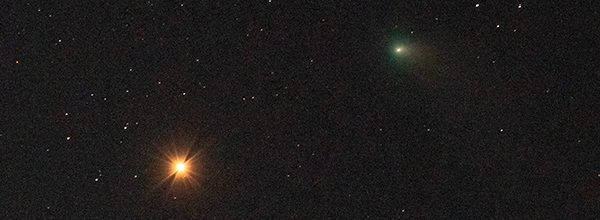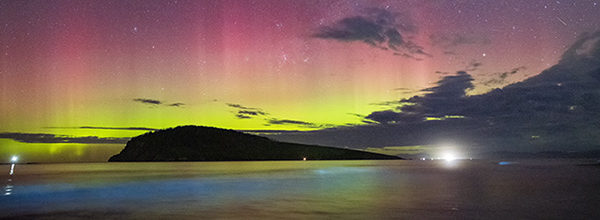The Milky Way & Pentax Astrotracer
The Milky Way is always a mesmerising subject to view and to photograph and the dark skies of Tasmania are an ideal location to view not just the Milky Way but the neighboring “dwarf” galaxies the Large and Small Magellanic Clouds.

The Milky Way & Magellanic clouds stand out against a very diffuse Aurora Australis on July 3 2014. This is one 270 second exposure utilising the Pentax Astrotracer (note horizon).
On a recent clear night (July 3, 2014 to be precise) I ventured out to Howden which is fast becoming well known as a great aurora spotting location. There wasnt much expected this evening on the aurora front but it seemed like a good occasion to view the southern skies deep in winter. I enjoy using the Astro Tracer feature of my Pentax K3 and tested it out this evening. The image above was a 270 second exposure at ISO 1600. Those familiar with shooting the aurora would know that 270 seconds is not necessary to capture the glow of the southern lights, especially at ISO 1600! But that goes to show exactly how dim this aurora was (for the record I couldn’t see anything to the naked eye).

This time I blended the horizon in from a second exposure with the Astrotracer function swithched off.
For those who aren’t aware, the Pentax Astrotracer is a part of the optional GPS unit (O-GPS1) which attaches to the camera via it’s hot shoe socket. You can then use the astrotracer function to lock on to extraterrestrial objects. For images where the earth’s horizon is included (such as these) a second shot is required with the astrotracing function switched off. This is because while your camera is locked onto the distant stars, the earth’s own rotation becomes captured in the image (see horizon in top image). The second image (above) is a carefully blended image of two exposures.

The Milky Way galaxy as seen with the Pentax Astrotracer. 30 second exposure at ISO 2500.
Anyone interested in the night sky should make a big effort to get outdoors over the next few evenings (Sept 21 onwards) as we are having some exceptionally calm and clear weather right now. Personally, I will be at Cradle Mountain presenting a nightsky photography workshop and couldn’t be happier with this forecast 🙂

